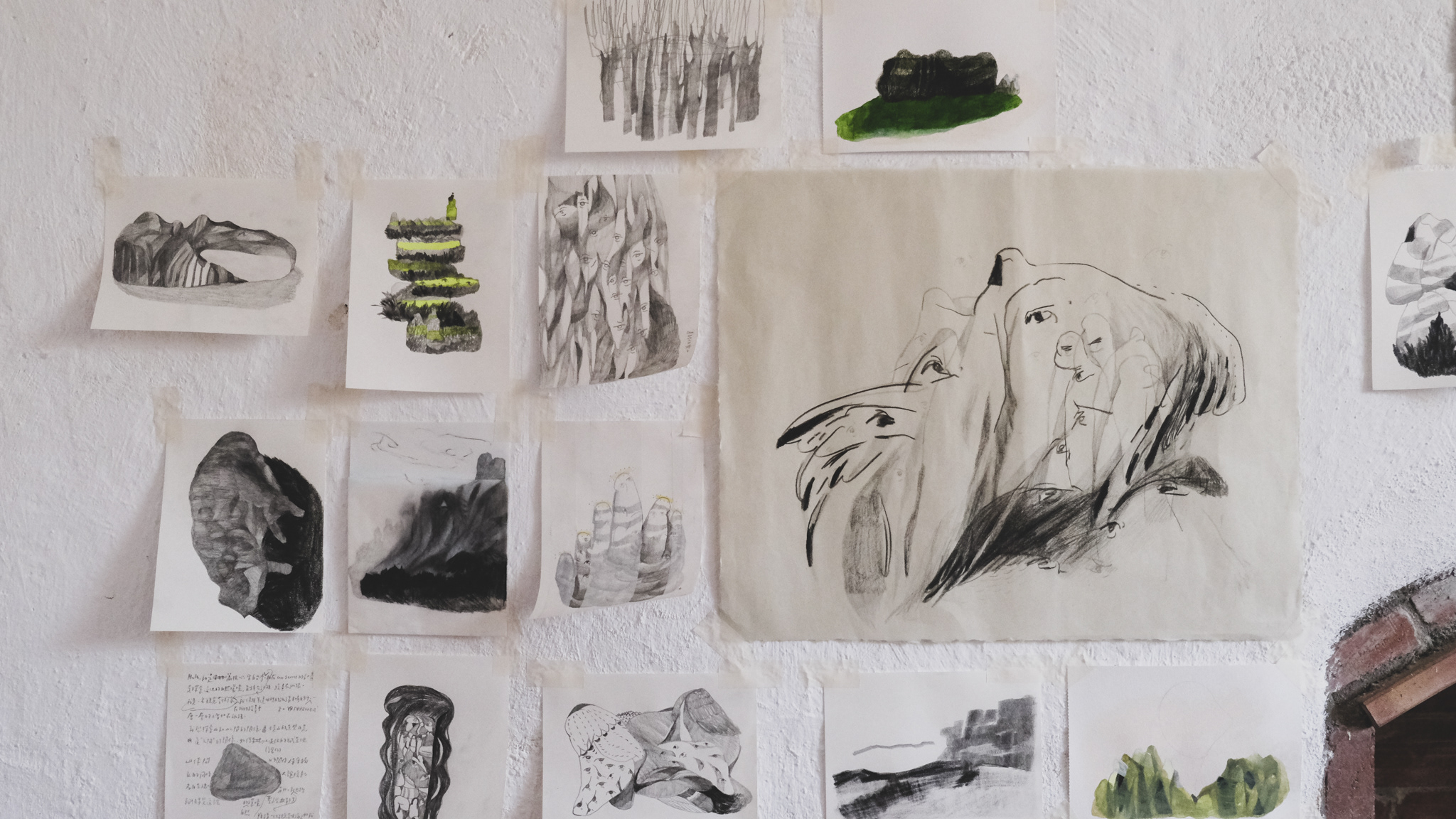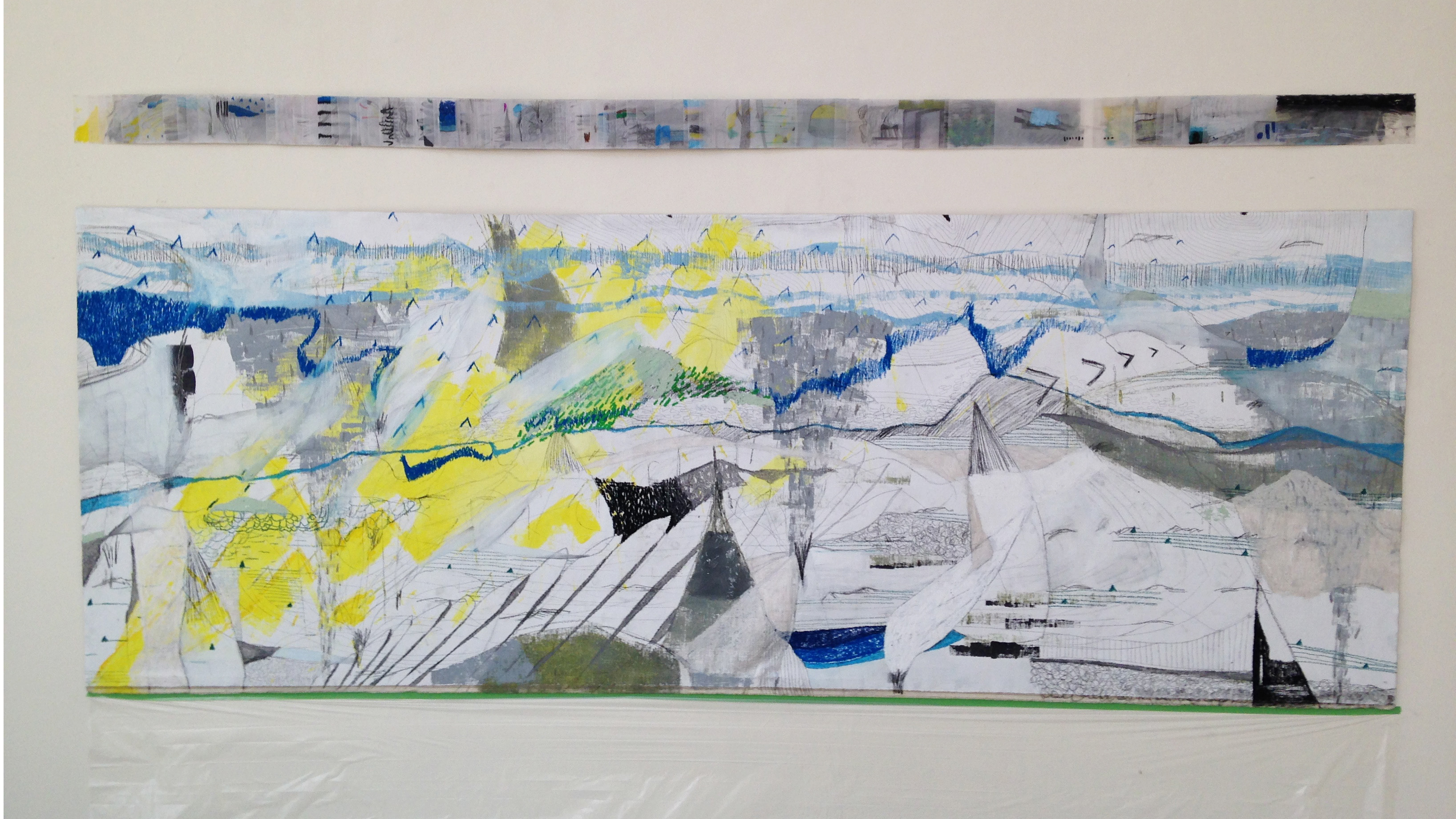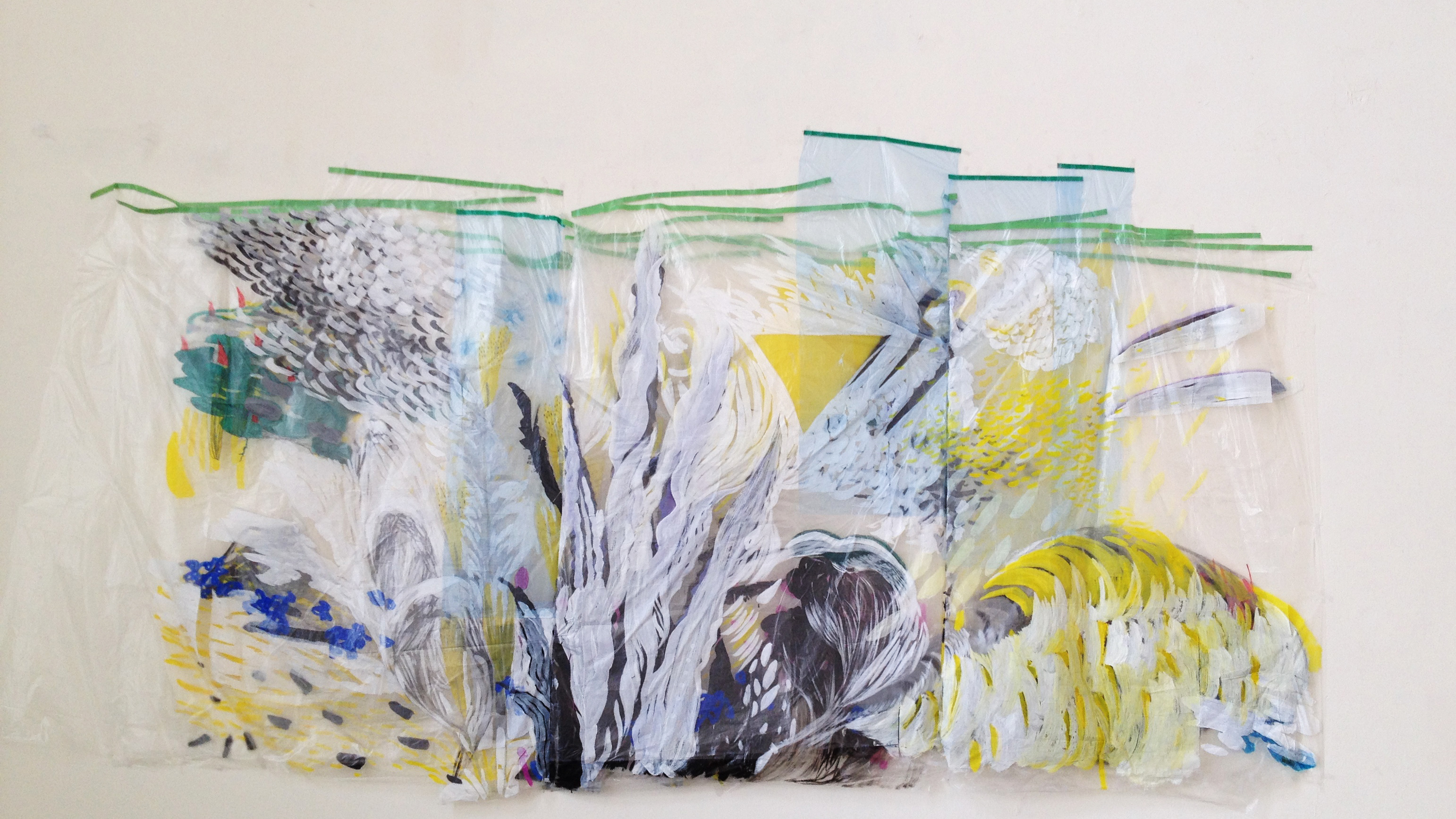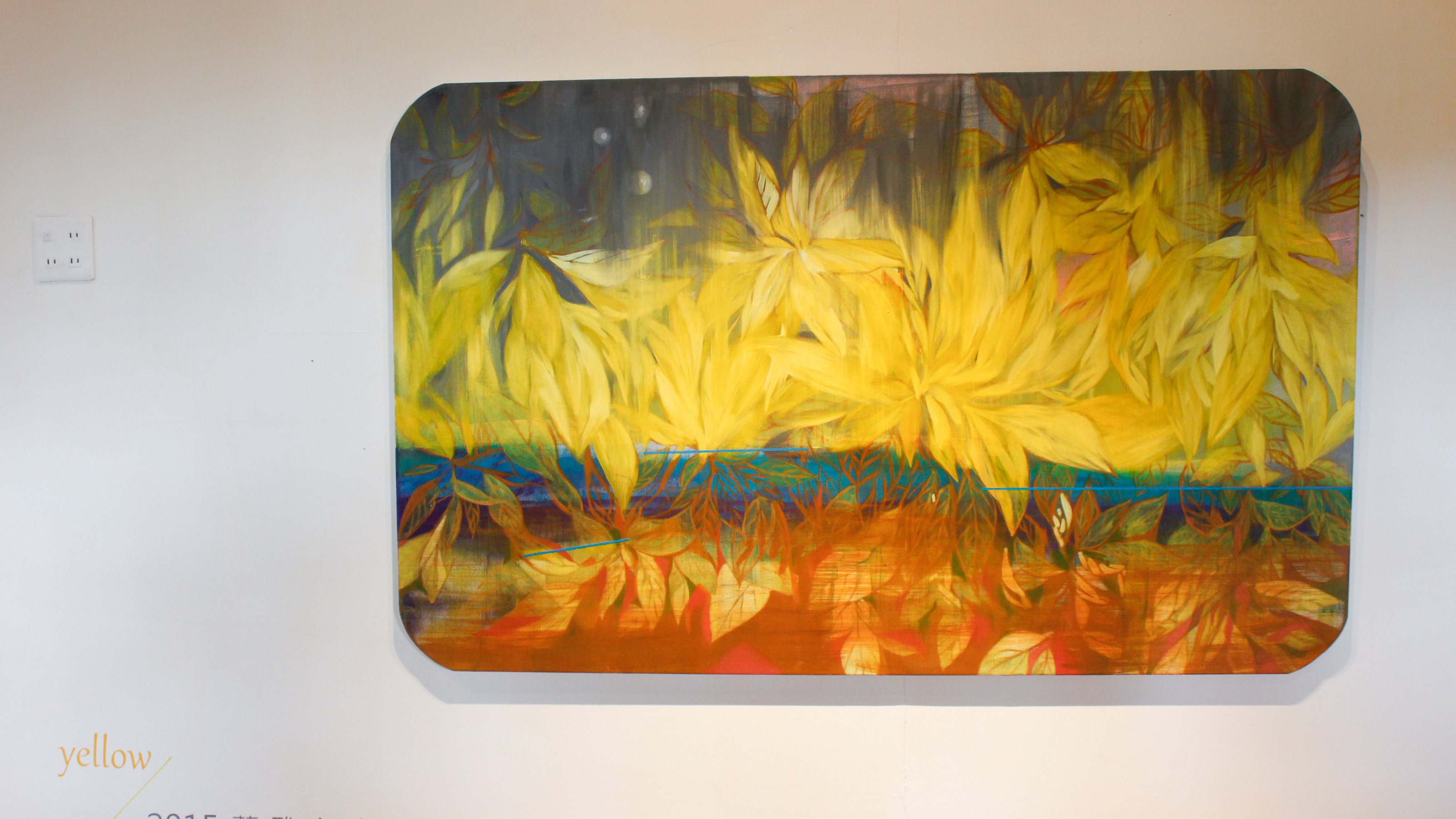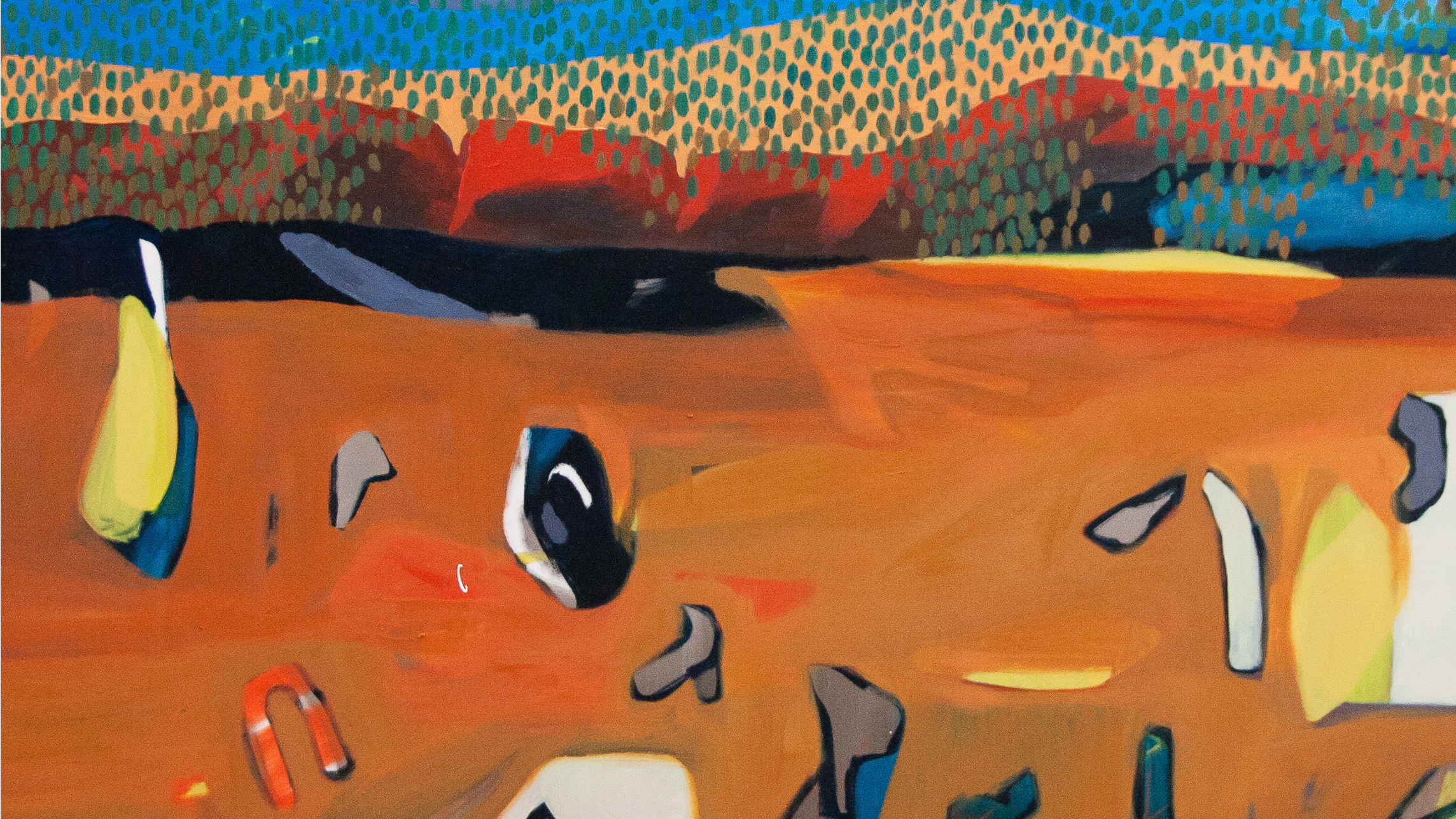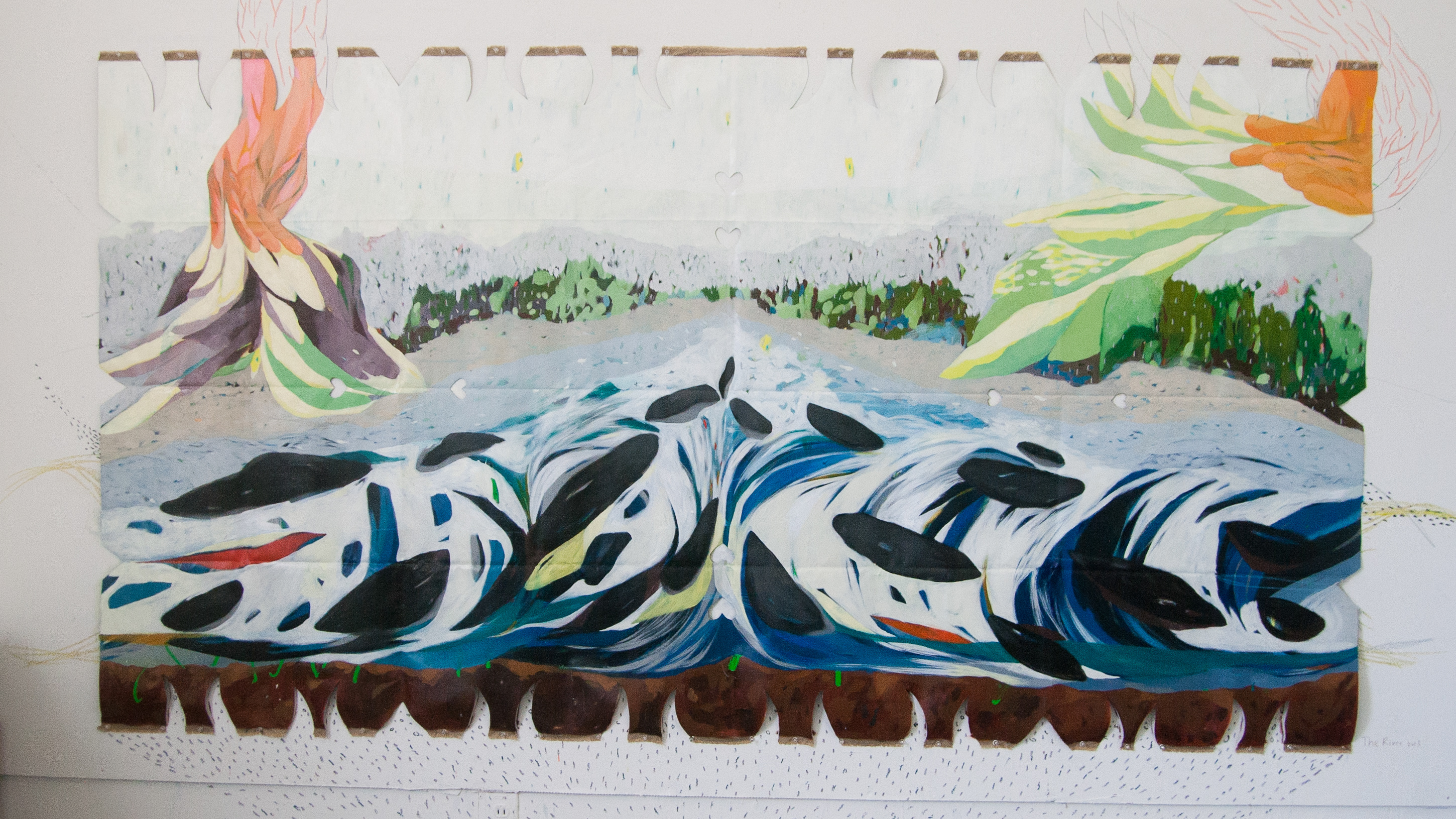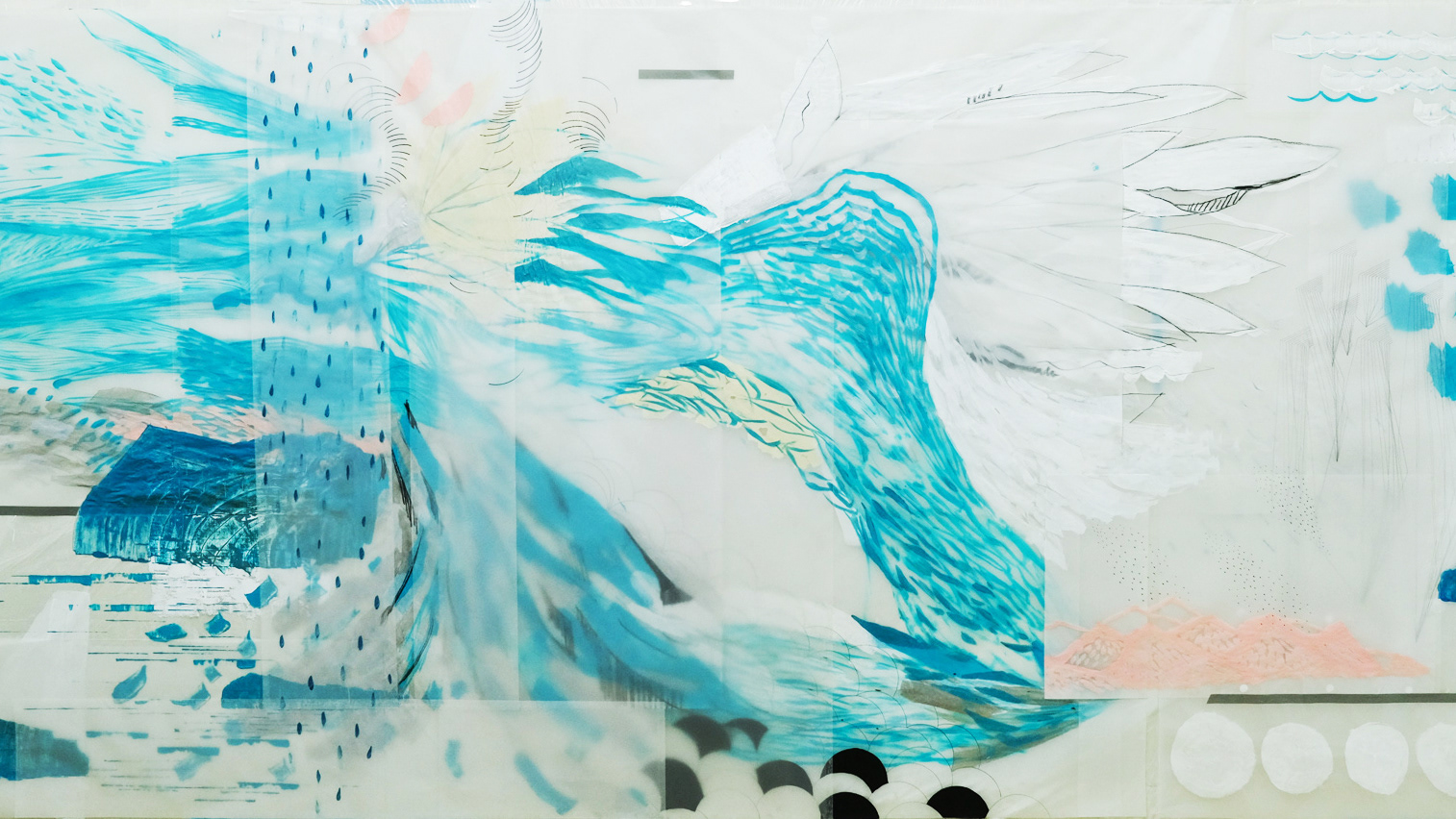每一個漂浮其上的事物,皆彼此有所聯繫;
在某一個地方所發生的騷動與不安,會在世界的另一頭被感受到。[1]
杜斯妥也夫斯基(Dostoevski)
《The Space Between》一展是關於時間和空間的提問與想像。廣義相對論的誕生,徹底瓦解了萬物在世界中所謂「絕對位置」的觀念。萬物彷彿漂浮於浩瀚之海,時間與空間成為動態的量值——每個人對時間的感知與度量,取決於其所處的位置與運動狀態。當我們以拓墣的思維看待宇宙,時空宛如一張具彈性的網,在皺摺、彎曲與反覆回繞的過程中,成為一道共時性的謎團。
我試圖勾勒出一系列的時空圖[2],而《The Space Between》的旅程脈絡,是從對加利利海的想像展開——那是新約聖經中,門徒與耶穌相遇的起點,也是在風浪中共渡的所在。這是一段動能的開展:作為跟隨者的門徒,隨著超越者橫渡水面,而我以繪畫實踐作為生命參與的方式,將這段過程視為個人的精神旅程。
透過二維繪畫中層層疊加與半透明媒材的運用,我持續探索「間」[3]的開啟所孕生出的多重維度——筆觸與筆觸之間、物質與物質之間、平面與平面之間的縫隙與交界。這些縫隙,正是思維與感知得以穿梭的通道。我藉由在「海面」上的時空圖,試圖捕捉那既聚攏又離散的能量場,進一步探索繪畫空間在疊層建構的更多可能性。
---------------
[1] 沈台訊譯。
[2] 霍金的時空座標圖中以時間為垂直軸,空間維度為水平軸。參史蒂芬.霍金(Stephen Hawking)著,《圖解時間簡史》(The Illustrated A Brief History of Time),台北:大塊,2018,頁43。
[3] 「間」一詞在日文中是指「ma」,作為空間距離和時間距離的間隙。
◆
“Everything floating upon it is connected to everything else;
the disturbance and unrest in one place will be felt on the other side of the world.”
— Fyodor Dostoevsky
the disturbance and unrest in one place will be felt on the other side of the world.”
— Fyodor Dostoevsky
The Space Between is an exhibition that poses questions and cultivates imaginations around time and space. The advent of general relativity shattered the notion of fixed, "absolute positions" in the universe. All things appear to drift upon a vast sea, where time and space are no longer constants, but dynamic quantities. Each individual’s perception and measurement of time depend on their specific position and state of motion. When we approach the cosmos through topological thinking, spacetime reveals itself as an elastic mesh—folding, warping, and looping back upon itself—emerging as a synchronistic enigma.
I attempt to sketch a series of spatiotemporal diagrams [1], and the journey of The Space Between begins with an imagined Sea of Galilee—the place in the New Testament where the disciples first encounter Jesus, and where they traverse storms together. It marks the unfolding of movement and momentum: as the disciples follow the transcendent figure across the waters, I embrace painting as a form of life-participation, a medium through which I undertake my own spiritual passage.
Through the layering of two-dimensional surfaces and the use of translucent materials, I continue to explore the generative dimensions that open within the “between” [2]—the interstices between brushstrokes, between materials, and between planes. These gaps become portals through which thought and perception may travel. By drawing spatiotemporal maps upon the "surface of the sea," I seek to trace a field of energy that simultaneously gathers and disperses—probing further into the layered possibilities of pictorial space.
------------
Footnotes:
[1] In Stephen Hawking’s spacetime diagrams, time is represented on the vertical axis, while spatial dimensions lie along the horizontal axis. See: Stephen Hawking, The Illustrated A Brief History of Time, Taipei: Locus Publishing, 2018, p. 43.
[2] In Japanese, ma (間) refers to the interval or gap between spatial or temporal elements.
[1] In Stephen Hawking’s spacetime diagrams, time is represented on the vertical axis, while spatial dimensions lie along the horizontal axis. See: Stephen Hawking, The Illustrated A Brief History of Time, Taipei: Locus Publishing, 2018, p. 43.
[2] In Japanese, ma (間) refers to the interval or gap between spatial or temporal elements.
無所不在-1
2020 ,油畫、描圖紙、比利時仿麻,156×156 cm
omnipresent I
2020, Oil and tracing paper on imitation linen , 156×156 cm
無所不在-2
2020 ,油畫、描圖紙、比利時仿麻,156×156 cm
omnipresent II
Oil and tracing paper on imitation linen, 156×156 cm
無所不在-3
2020 ,油畫、描圖紙、比利時仿麻,156×156 cm
omnipresent III
Oil and tracing paper on imitation linen, 156×156 cm
無所不在-4
2020 ,油畫、描圖紙、比利時仿麻,56×156 cm
omnipresent VI
2020, Oil and tracing paper on imitation linen, 156×156 cm
無所不在-5
2020,油畫、描圖紙、比利時仿麻,156×156 cm
omnipresent V
2020, Oil and tracing paper on imitation linen, 156×156 cm
時時刻刻-1
2020,油畫、比利時仿麻,130×150cm
Moment I
2020, oil on imitation linen, 130x150cm
時時刻刻-3
2020,油畫、比利時仿麻,130×150cm
Moment III
2020, oil on imitation linen, 130x150cm
時時刻刻-4
2020,油畫、比利時仿麻,130×150cm
Moment IV
2020, oil on imitation linen, 130x150cm
日夜
2020,油畫、比利時麻,111×111cm×2
Day and Night
2020, oil on imitation linen, 11×111cm×2
